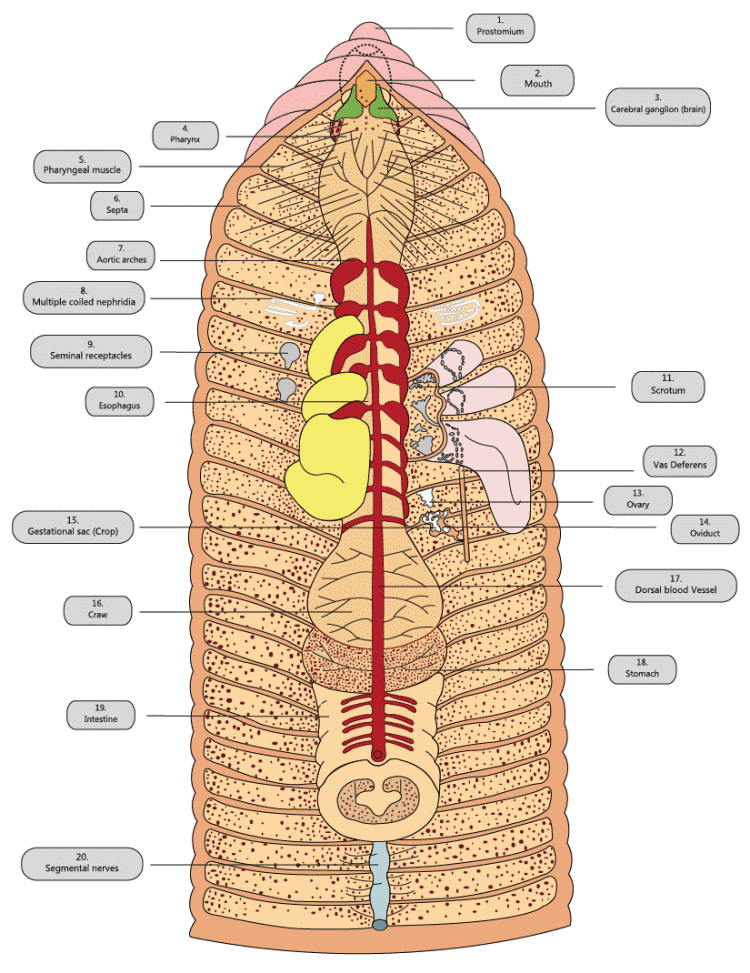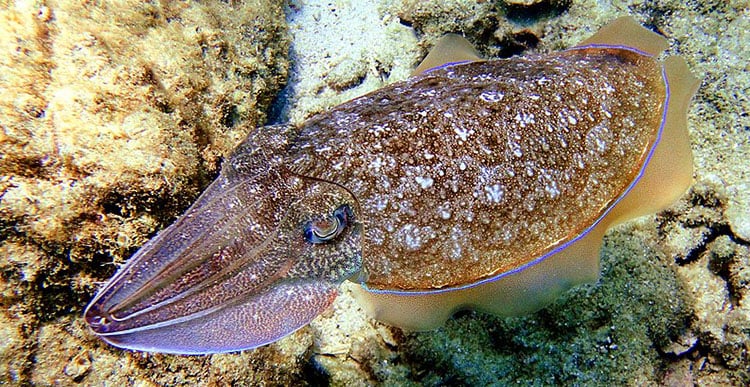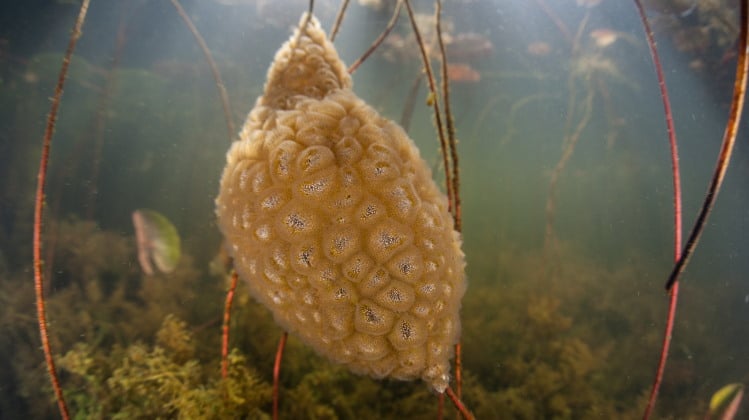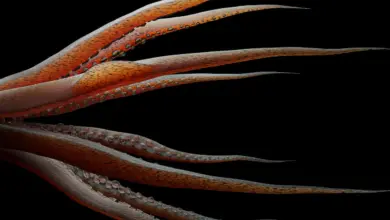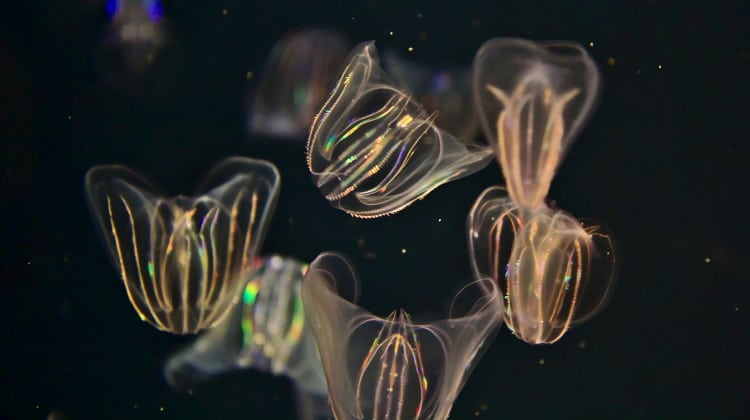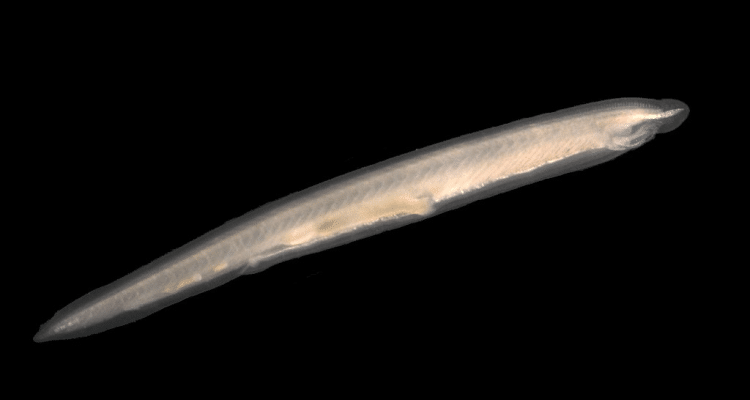Oligochaeta: The Anatomy & Reproduction Of The Humble Earthworm
The subclass Oligochaeta contains all the animals commonly thought of as ‘earthworms’.
Long thin worms with no obvious appendages to their bodies and greatly reduced heads, so that when the animal is still it is not always obvious which end is the head and which is the tail!
As a group they are all morphologically similar and taxonomic division is often made far more on the basis of internal characteristics, particularly the positioning of the genitalia.
The Oligochaeta are the second largest group of the Annelida. With 3,100 known species, they make up about one third of the phylum. Within this diversity of species there are aquatic forms – both freshwater and marine – and also many terrestrial species.
In terms of diet, the smaller species are often predatory while the larger species are soil or mud feeders. There are also a few parasitic species.
The ‘Oligo’ in Oligochaeta means ‘few’ just as the ‘Poly’ in Polychaeta means ‘many’.
Thus the Oligochaeta are the animals with few chaetae, or few bristles.
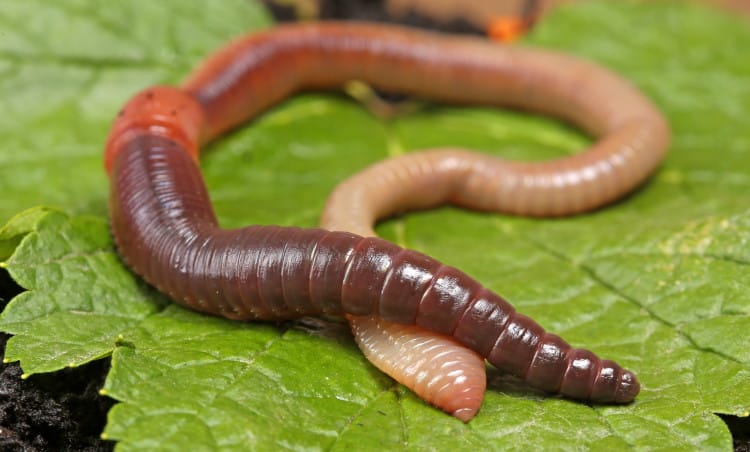
Normally, as in the common earthworms, Oligochaetes have 8 small chaetae per body segment. These are usually arranged in four groups of two around the body. The Oligochaetes are also distinguished from the Polychaeta, in that they are hermaphroditic and in that they possess a clitellum as adults. This is an organ situated on the anterior section of the animal that is important in reproduction.
What the Oligochaeta lack in terms of species number (in comparison with the Polychaeta, they make up for in numbers of individuals.
In some places in Britain there are 1 ton of common earthworms per acre, which move well over 10 tons of soil per year.
Common earthworms are quite large in comparison with many soil animals and the total numbers present in a given soil vary enormously in different soil types, habitats and soil usage regimes. Generally speaking deciduous woodland and orchard soils support the highest numbers. Also temperate soils tend to support higher number than tropical soils. Over all soil types, the range per square metre of soil is from less than 1 to more than 800 individuals.
Other groups of Oligochaetes are smaller and can be packed more densely into a similar area. Thus in the mud of the River Thames you can find more than 40,000 Oligochaetes per metre square, most of which will be Tubificids. While further inland, it is not difficult to find up to 300,000 or more Enchytreids per metre square of moorland soil.
The Magic Of Earthworm Castings & Soil
Earthworms are enormously important in the construction and fertility maintenance of the soil.
They were described by Aristotle as ‘the intestines of the earth’.
Earthworms are miniature topsoil factories and numerous soil scientists have been equally fascinated by the amount of work done by them. Charles Darwin said of them:
“It may be doubted whether there many other animals which have played so important a part in the history of the world as these lowly organised creatures”.
Earthworms make soil and all other living things eventually pass through an earthworm, on the way to becoming soil! It is likely that nearly every atom in your body has been in an earthworm’s stomach before it was part of you (some salts and ions, and some water are the exceptions). See Soil Ecology.
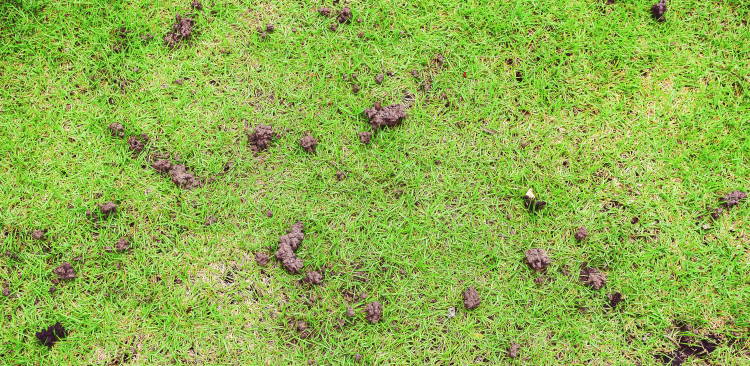
Earthworm castings are rich in all the minerals necessary for plant growth, in a water soluble form so that they are immediately available for plant use. All the soil you have ever seen, at least in temperate climes, has passed through the stomachs of numerous earthworms to become what it is.
The best way to deal with those unwanted earthworm casts on your lawn is to collect them and use them as potting compost. No manufacturer can make anything better suited to the growth of seedlings.
It has been scientifically proven that earthworms increase the productivity of many soils, in some cases doubling or tripling crop yields. They do this by improving the structure of the soil. By bringing nutrients up to the surface layers of the soil from deeper down and assisting in the break down of organic matter in (or on) the surface of the soil.
This has resulted in a huge market in worms springing up in the second half of the 20th century in Western Europe and USA!
In many cases this has been good, but in others ignorance has resulted in the efforts and money spent being wasted. Soils have a definite worm carrying capacity which relates directly to the amount of organic matter in, and regularly added to, them (yearly in natural environments).
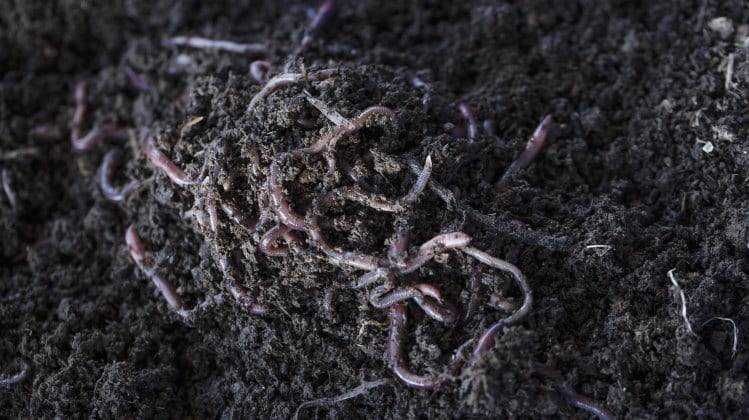
Adding more worms than the soil can carry – or adding worms to soils poor or deficient in organic matter – will result in only a small temporary increase in fertility, resulting from the nutrients released from the dead worms and not from the work they have done.
Furthermore, not all worms are suitable for all soils and not all worms are active in soil creation. In particular Eisenia foetida, a commonly sold species which is very useful in composts and dung recycling, is useless in – and will not survive in – ordinary field soils.
Now it will be useful to examine the anatomy of the earthworm.
Earthworm Anatomy
The below diagram is a good way to get a top level view of the earthworm’s anatomy.
Earthworm Nervous System
The nervous system consists of a brain, which is found in the prostomium and connected to the ventral nerve cord – and the sub-pharyngeal ganglia – by a special set of nerves called the circum-pharyngeal connectives.
The ventral nerve cord is surrounded by a fibrous sheath. The nerve cord contains two sorts of nerve fibres: normal nerve and giant nerves.
The giant nerves are only important during rapid escape manoeuvres, when the animal needs to react very quickly.
The ventral nerve cord runs the whole length of the animal and gives rise to several sets of nerves in each segment. In the more active forms, each segment has its own small ganglia. But in the more sedentary forms, these are absent.
Also, the more active the lifestyle of an animal the larger its brain – because of the need to interpret a much greater input of sensory information as well as the need to co-ordinate more varied and complicated movements.
Earthworm Circulatory System
The blood system is a closed system, meaning that they have blood vessels through which the blood flows.
There are two main longitudinal blood vessels, a dorsal one and a ventral one, as well as three smaller longitudinal vessels, two lateral neural vessels and one sub-neural vessel.
These vessels have circular muscles around them which can contract rhythmically to keep the blood moving around the body. The vessels also contain valves which ensure the blood only flows in one direction. Blood flows from the head to the tail in the ventral vessel and back (from the tail to the head) in the dorsal vessel.
In each segment a number of smaller lateral (side) vessels branch off from the main vessels to supply the sections of that segment. The blood of annelids contains haemoglobin, the same respiratory pigment as in humans. It is this that makes their blood the same red colour as ours.
Gaseous Exchange
Gaseous exchange normally occurs over the whole of the animal’s body.
Most aquatic oligochaetes – being smaller than polychaetes – have no need of special additional respiratory organs.
Because gaseous exchange is far greater in the presence of moisture, terrestrial species secrete moisture in the form of coelomic fluid from the dorsal pores, mucous from the epidermal mucous glands and the excretions of the nephridia.
Excretion and Osmoregulation
Excretion of metabolic wastes is through the action of nephridia.
These are long coiled tubes which have many cilia lining their internal surface. In Lumbricus these are longer and more complicated than in the polychaetes. The tube is divided into three distinct parts, the innermost section of which is far wider than normalnephridiall tubes.
Both blood and coelomic fluid enter these nephridia – where nutrients, water and salts are removed before the remaining wastes are passed out through the nephridiopore.
Most body segments, except the first three and last one, have their own pair of nephridia. Nephridia also serve as organs of osmoregulation. In species that live in fresh water – or environments with variable salinity – the nephridial tubes are longer to help them deal with the greater osmotic potential occurring between their inner-body fluids and the fluids of the environment they are living in.
Earthworm Reproduction
Oligochaetes are hermaphrodites, with separate testis and ovaries.
The sexual organs – and the ducts that lead to and from them – are situated in the anterior (front) part of the animal, normally between segments 7 and 15. The actual placement of the reproductive organs, including the openings of the ducts (which are normally on the same segments) are important in classification.
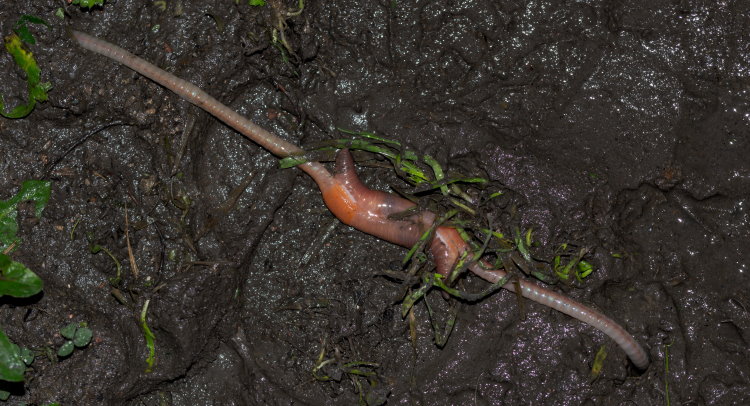
In Lumbricuscus terrestris, a common worm in Western Europe, the testis are in segments 10 and 11, the seminal vesicles in segments 9,11, and 12, while the vas deferens opens on segment 15. The ovaries are found in segments 13 and the oviduct opens on segment 14. The sexual organs and their ducts are paired, one on each side of the worm’s body. Sperm travels from the opening of the vas deferens to the clitellum, segments 32-36, along two seminal grooves.
Copulation occurs on warm damp nights. The worms lie head to tail and side by side.
In this way, the clitellum segments of each animal are opposite the segments containing the sexual organs of the other. The clitella secrete a mucous tube that surrounds the worm from before the first reproductive segment, to the clitella segments (segments 8 to 36 in L. terrestris). Sperm received from the partner worm is stored in the spermathecal openings (segment 9 in L. terrestris) and then the two worms separate.
Each worm now secretes a new mucous tube, one that is enriched with albumin from the clitellum and wrapped in membranene.
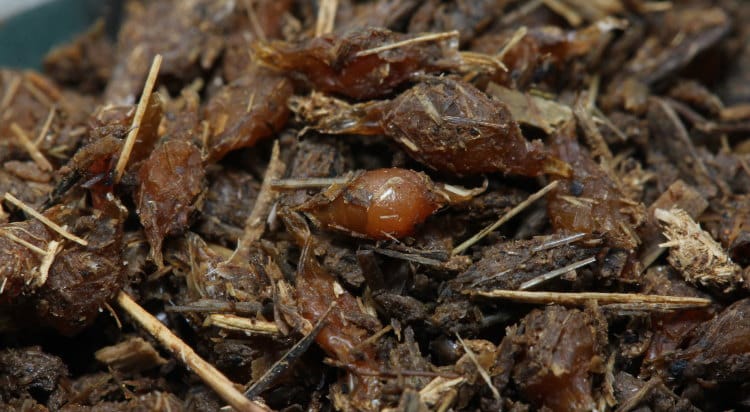
The earthworm eggs (5 – 16 in L. terrestris) are shed into this tube along with some sperm. The worm then backs out of the tube, which now becomes an egg cocoon.
Fertilisation occurs inside the cocoon. The cocoon is left under the ground, or attached to plants under the water and often changes shape, becoming darker, smaller and harder.
In L. terrestris only one egg survives the juvenile stage to emerge from the cocoon. But in other species, more than one will survive. The exact detail vary from species to species but the general pattern remains the same.
Oligochaeta Classification & Diversity
The Oligochaeta are a diverse group of organisms, although they are fairly similar in basic design.
The taxonomic description of the group varies depending on which expert you talk with. If Clitellata is a class, then Oligochaeta is normally a subclass. But Clitellata can be a Superclass in some classification schemes and thus Oligochaeta becomes a class in its own right.
These sorts of problems abound through the whole living world and you shouldn’t worry about them. Until you know enough to actually participate in the arguments, it is best to use a generalised (even if possibly out of date) scheme such as this – or whatever other scheme your teacher or lecturer proposes.
Families In Subclass Oligochaeta
- Family Naididae
- Family Opisthocystidae
- Family Tubificidae
- Family Phreodrilidae
- Family Enchytraeidae
- Family Lumbriculidae
- Family Haplotaxidae
- Family Allurodidae
- Family Syngenodrilidae
- Family Moniligastridae
- Family Microchaetidae
- Family Glossoscolecidae
- Family Criodrilidae
- Family Lumbricidae
- Family Acanthodrilidae
- Family Megascolecidae
- Family Eudrilidae
Naididae
The family Naididae contains small, mostly fresh-water, worms whose bodies are transparent – allowing all their internal organs to be seen.
They possess gills for gaseous exchange, which are situated on the inside of their anus.
Naidids live in a variety of manners. They can be filter feeders, such as Ripestes parasita, carnivorous hunters such as Chaetogaster limnaei or substrate eaters (mud in this case) such as members of the genera Aulophorus and Dero.
Chaetogaster limnaei lives in the pulmonary cavity of water snails, where it feeds on the larvae of parasitic Platyhelminths (flukes) that attach the snail.
Some Naidids, such as Stylaria lacustris, can reproduce both asexual and sexually. In this earthworm species asexual reproduction, but budding from the posterior end, occurs throughout the summer and can produce chains of individual worms still attached to each other. In the autumn however, it turns into a normally sexual organism.
Ripestes parasita spends most of its life in a tube, but will leave its tube occasionally and go for a swim.
Tubificidae (Tubifex Worms)
The family Tubificidae are a group of worms that live in mud, where they feed on the organic matter trapped in the mud. They are commonly referred to as tubifex worms. Tubificids are red because they have a blood pigment that is very like haemoglobin.
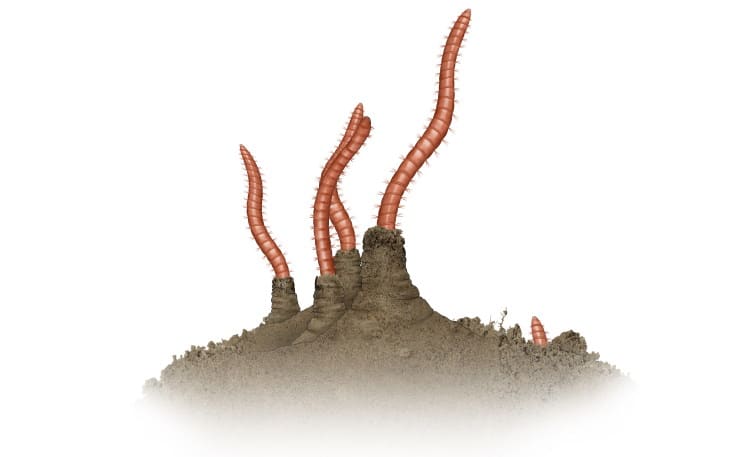
Living in the mud that lines the floor of many aquatic habitats, they secrete thin tubes to live in. They spend their time with their heads down in the mud and their tails up in the water. They beat their tails to drive a current of water down into their tubes and over their bodies.
In most tubificids, gaseous exchange is carried out internally around their intestines and for this reason they constantly swallow water.
However there are exception such as Branchiura sowerbyi which has long delicate gills rising from its posterior end.
Tubifex worms, in the genera Tubifex, such as Tubifex tubifex are bred and sold as fish food and are therefore easily obtainable from pet shops.
Phreodrilidae
The Phreodrilidae is a small family of smallish worms.
They all occur in the Southern Hemisphere and are often found in deep lakes and wells. However some species live in the branchial chambers of Crayfish.
Enchytraeidae
The family Enchytraeidae is a successful and diverse group of relatively small worms.
Most species are either clear or whitishly coloured. Most commonly they live in damp soil. They eat the soil, digesting the organic matter and the micro-organisms that live in it.
They are common in well watered gardens with plenty of organic matter. Enchytraeus albidus is another worm much prized by aquariasts as food for fishes. It occurs most naturally along the sea shore, but can also occasionally be found in composts.
Lumbriculidae
The family Lumbriculidae is mostly comprised of larger worms than the previous two families. They often look much like small earthworms.
One of the largest species is Rhynchelmis limosella, which reaches 14cm (5.5 ins) in length.
They are most famous for their ability to break into pieces, which then each regenerate into a whole worm.
Most species are aquatic and predatory like Agriodrilus vermivorus, which lives in Lake Biakal and feeds on smaller worms. Other species like Lumbriculus variegatus live in rotting vegetation, or on the margins of pools and ponds. They can take advantage of seasonal habitats because during dry weather they will burrow deep into the ground.
Lumbricidae
The family Lumbricidae contains the majority of those species most people think of as Earthworms, including the genera Lumbricus, Allolobophora and Eisenia.
Though many species are known for the good work they do in the soil, those species which leave their faeces (earthworm castings) on the surface are still disliked by some people.
Not all species of earthworm do this – some leave their casts in spaces in the soil.
The fact remains that wherever they are left, they are very good for the soil and for anything that is growing in it. Earthworms are nature’s gardeners.
Different species of Lumbricidae prefer different habits and live in different ways. Thus Lumbricus terrestris is very common in chalky soils whiles L. rubellus and L. castaneus are more common in loam. If the soil is very moist, these species will be replaced by others such as Eiseniella tetraeda and Allolobophora chlorotica. While extremely rich organic sources, such as dung and composts, are more likely to contain Eisenia foetida.
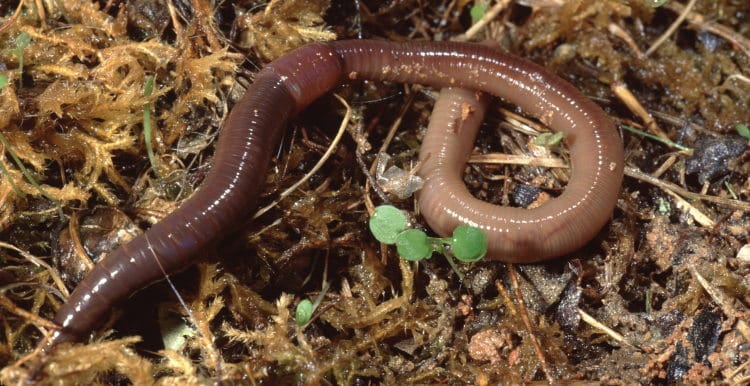
Some worms dig very deep burrows and Drawida grandis commonly burrows to depths of 3 metres (10 ft). Lumbricus and Allolobophora species can also both dig deeply into the ground with their burrows commonly 1 metre (3 ft) and occasionally in excess of 2 metres deep for Lumbricus terrestris and to around 45 cms (1.5 ft) for Allolobophora longa and A. nocturna.
Octolasium cyaneum will also regularly burrow to 0.5 metre deep while A. caliginosa, Dendrobaena rubida, and species of Eiseniella and Eisenia prefer to stay nearer the surface.
Young and immature worms are also generally found nearer the soil surface, with most worms being found in the top 15cm or 6 inches of the soil. However, time of year and climatic conditions have a strong effect and temperate worms live deeper during the winter when the surface of the surface of the soil is colder than 30cm (1 ft) down.
Also, in times of water shortage, some Lumbricidae species such as Eisenia foetida will burrow deeper down into the soil, seeking moisture. While others, which are better at tolerating desiccation, remain nearer the surface.
Most temperate soils can contain at least 7 to 10 species of earthworms and good soils will contain more. In different parts of the world different species of worms are most active at different times of year.
In England L. terrestris and A. caliginosa, among others, are most active between August and December while in tropical and subtropical environments worm activity is often limited to the rainy or monsoon season.
Megascolecidae
The Megascolecidae is a large family of often large worms, found only in the tropics.
It is most well know because of its larger Australian members such as Megascolides australis, which may reach up to 3 metres in length.
Not all Megascolecidae are huge however. Microscolex dubius from South America, for instance, seldom reaches more than 9cm (4 ins) in length. Another Megascolecid, Amynthas corticis, while slightly larger with a maximum length of 17cm (6.5 in) is also interesting because it is parthenogenetic (all females are asexual and give birth to other females without a male) and because it can shed part of the tail end of its body like a lizard to help it escape predators.
Microchaetidae
The Microchaetidae from south Africa are most well known because of Microchaetus rappi, the longest worm in the world (6.7 metres) (22 ft) which was found at the edge of a road. Most members of this family are far smaller than this.
Final Thoughts
The earthworms of the subclass Oligochaeta are worthy of our eternal gratitude and respect. I hope you have learned a little about them!
Perhaps now you’d like to know more about leeches?

